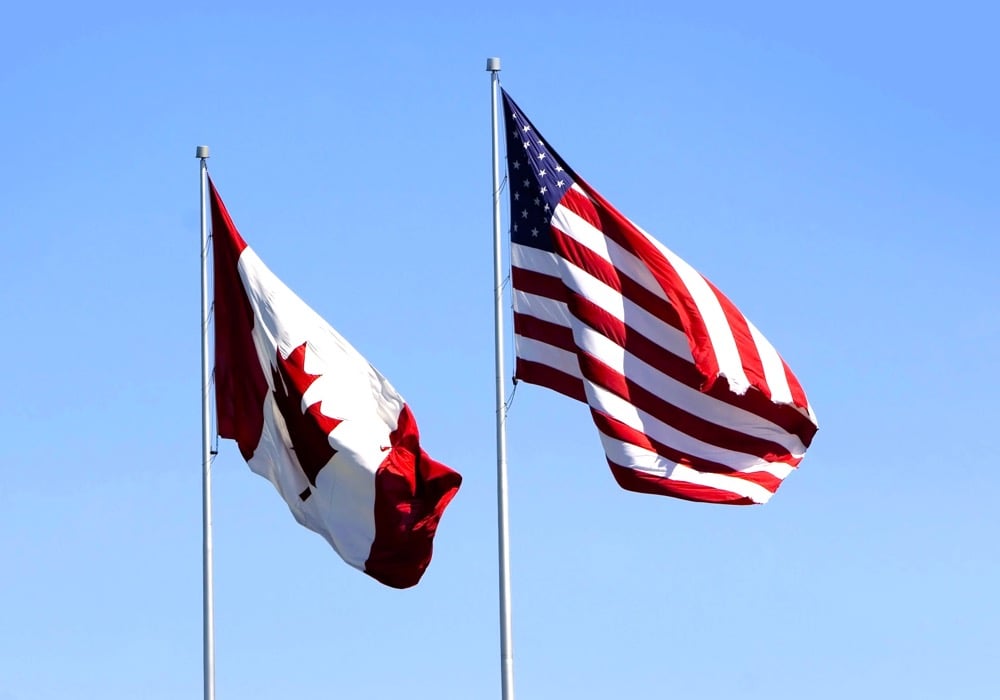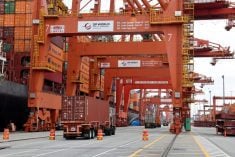Falling crude oil prices have pushed fuel costs at Canadian pumps to the lowest levels in recent memory, but the cost of farm diesel remains stable.
At around $1 per litre, prices are down from recent weeks, but farmers were making purchases at 90 cents this fall, said Chris Adair of Rack Petroleum in Biggar, Sask.
The cost for farmers has risen since harvest wrapped up, and Adair expects it to stay there until springtime, the result of predictable seasonal trends and strong demand from the oil sector.
Read Also

Canadian trade data delayed by U.S. government shutdown
Canadian international trade data for September will be delayed indefinitely due to the ongoing partial shutdown of the United States government, Statistics Canada said Friday, Oct. 24.
“Fifteen, 16, 17 years ago, western Canadian farmer seemed like they dictated what would happen,” he said.
“(Prices) would rise when the farmers went into the field and when they got out of the field it’d drop. It’s not doing that anymore.”
Retail gasoline prices have fallen in recent weeks, following a steep decline in crude oil prices, which reached a four-year low yesterday at just over US$74 per barrel. Some analysts are projecting the price to hit $60.
“If crude rises at all, I think you’re going to see diesel stay around that dollar,” said Adair. “I hear reports of people seeing $50 per barrel oil. If you see that, I guess it’s probably going to go the other way a bit, but I still don’t think you’re going to see diesel below 90 cents.”
In Saskatoon this morning, regular gasoline could be purchased for under $1 per litre and diesel from $1.23 to $1.36.
In July, the regular and diesel prices neared parity, albeit at higher prices than today. The spread widens in the winter as demand for heating fuel increases.
The spread rose 25 to 30 cents in Western Canada during last year’s harsh winter.
Jason Parent of MJ Ervin and Associates, which surveys petroleum prices, said the current spread could be the result of low diesel stocks in the United States.
Parent said the spread can be expected to narrow in the spring. However, he expects lower retail prices to remain into the new year.
“I think (in) February you’re going to start to see fuel prices come back up regardless of what crude does and that’s just a normal seasonal trend with gasoline prices,” he said, predicting crude oil prices won’t dip much lower for long.
“I expect crude to stay where it is for some time.… There’s nothing suggesting prices are going to jump anytime soon.”
The price decline is the result of increased production from the U.S., which is contributing to a global oversupply. The Organization of the Petroleum Exporting Countries has yet to alter its production, said Parent, as some would expect it to. Analysts are carefully watching a meeting of OPEC countries later this week.
“What has happened very recently is Saudi Arabia has basically said, ‘we’re going to stop doing that. We’re going to protect our market share and we’re going to stop lowering our production.’ So you’re left with this glut of product right now … What’s in place right now is a little bit like a game of chicken between the U.S. producers and OPEC and Saudi Arabia.”














